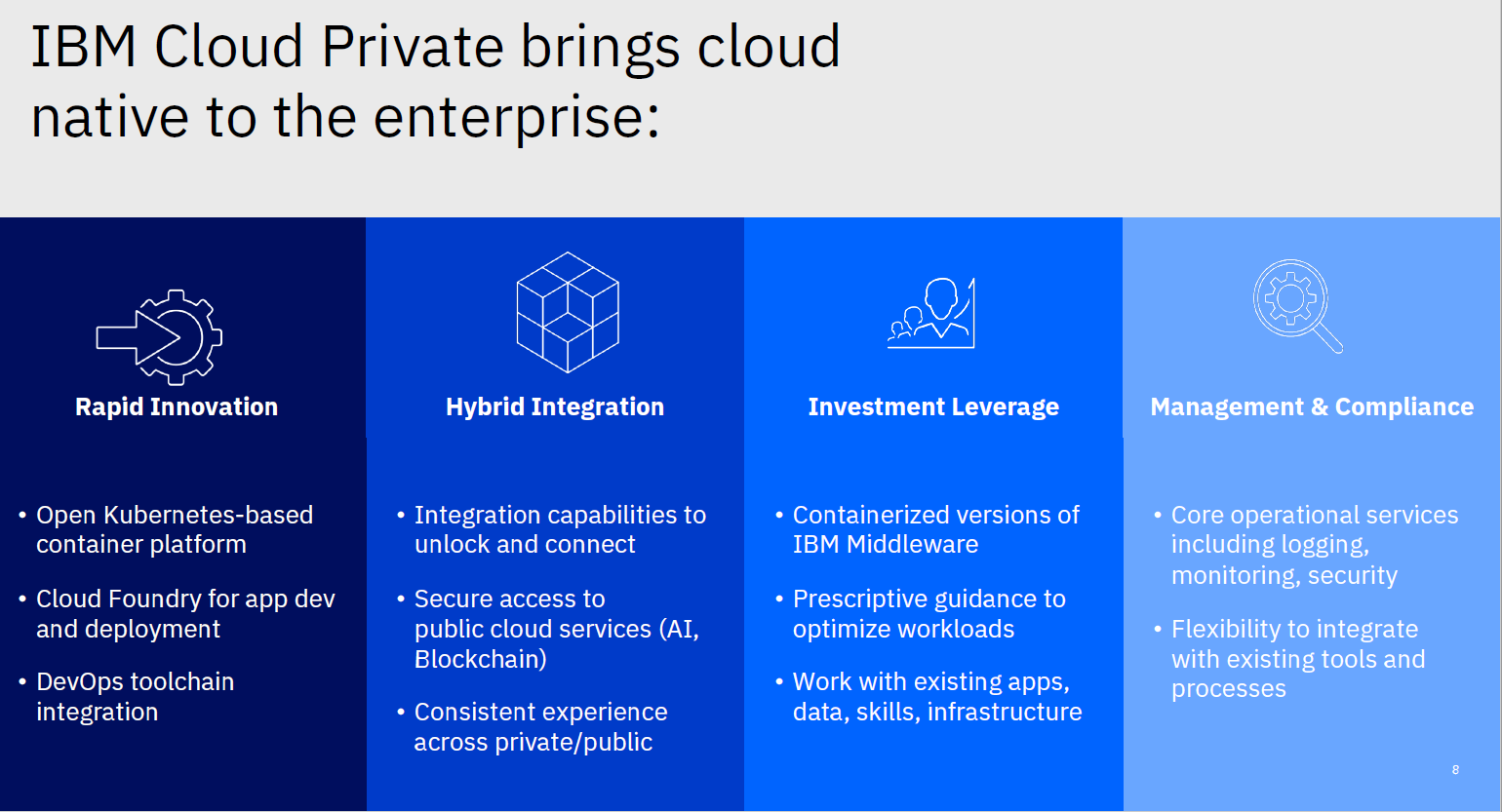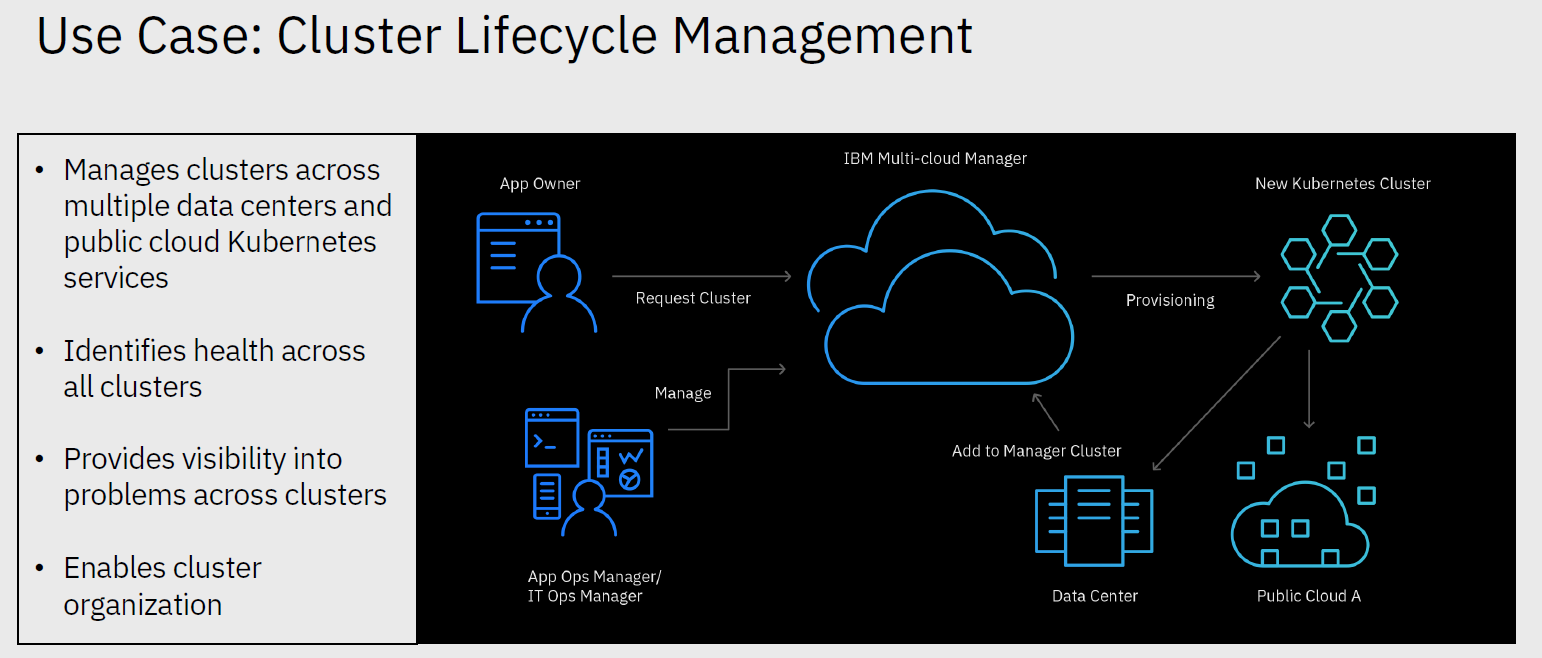
Enterprises are looking at a future of multiple clouds and hybrid clouds where they can run not only their new cloud-native applications but also migrate many of their legacy workloads and take advantage of cost savings and the agility that comes with cloud computing. The enthusiasm is there, with 98 percent of respondents to a survey by the IBM Institute for Business Value saying they plan to use multiple hybrid clouds within three years and 66 percent saying a multicloud environment is crucial to reducing costs.
However, those ambitious plans also are running into the grinding reality of the myriad management and other challenges that come with such a widely distributed environment where applications are spread across so many public and private clouds, and that reality also is being seen in the survey released this week. Sure, almost all organizations plan to leverage multiple clouds, but only 41 percent say they have a multicloud management strategy and 38 percent have the procedures and tools to operate a multicloud environment. Enterprises don’t have a handful of applications that are core to their operations; they have thousands that need to be rationalized and modernized and still must be managed if they’re moved into the cloud, according to Bala Rajaraman, chief technology officer for cloud platform services at IBM.
“What we noticed as this ecosystem was evolving was that about 20 percent of the workloads were fundamentally cloud-native, that you could run them on a public cloud,” Rajaraman tells The Next Platform. “It served the purpose and it leveraged the value proposition that public clouds provided. That challenge that came about was that now you had a whole bunch of applications. Some of them you were going to keep, some of them you were going to potentially modernize by putting on a more agile container-based platform, some of them you were going to do that but then expose with APIs so you can connect them with the newer applications you’re building, and some of them you’re going to just rewrite completely.”
The end result is that right now, only 20 percent of enterprise workloads are running in the public cloud, while the remaining 80 percent are not for a number of reasons, from concerns about security and compliance to challenges around figuring out whole to make applications work together when housed in different clouds, determining and tracking where data is located, and integration of the ecosystems around the applications. The issue, Rajaraman says, was that “the primary requirement in many of these cases was enterprise control. They wanted to have more structured control over how these workloads evolved and which ones moved. They wanted a programming model that was both cloud-friendly and traditional. How do you create a platform that supports these requirements?”
To deal with the 80 percent of applications that had yet to make the move to the cloud, IBM last year launched IBM Cloud Private (ICP), an environment that can run on X86, Power, or mainframe infrastructure and is built atop Kubernetes, leveraging modern and open tools, including Helm for managing Kubernetes apps and containerized versions of IBM middleware, Cloud Foundry and DevOps methods, and integration capabilities to give users access to such public cloud services as artificial intelligence (AI) and blockchain. IBM solutions like WebSphere, DB2, MQSeries, and various management products have been containerized for ICP, as have open products like Mongo and Postgres, Rajaraman says.
In addition, select capabilities in Watson, blockchain and security features have moved onto the platform. By basing ICP on Kubernetes, other services like identity and access management, monitoring, logging and metering also have made their way on.
“The value it provides our clients is that, a) they do not have to completely refactor their applications to take advantage of the benefits of cloud,” he says. “They can move, for example, a WebSphere application from where it is right now – with minimal changes – to a WebSphere that is running on containers. You diminish the risk in terms of the changes, which means you can address a broader part of your portfolio, a broader part of your existing portfolio, in many cases. Furthermore, you can the operational benefits – the benefits of common logging, the consistency of common identity, and so on and so forth. It gives you the operational benefits while reducing the risks.”
The use of Kubernetes and other opens standards also means that enterprises can place workloads not only on IBM’s private or public clouds, but into environments of other cloud providers that conform to the container orchestration platform. Now the company is putting its new Multicloud Manager (MCM) into ICP to help organizations leverage Kubernetes, containers, microservices and other open and modern technologies to more easily manage, move and integrate the disaggregated applications that are housed in disparate public and private clouds. This stack includes a commercially supported version of Kubernetes plus Helm and also the Prometheus system management tool and the Gafana analytics and monitoring tool, among other components.
“You have pieces of applications running on multiple clouds on containers, you have with them in datacenters test clusters and cloud clusters, you have different Kubernetes clusters that host different components of an application, almost like you have a tiered cluster, like you have a database cluster and you have an apps cluster and you have an analytics cluster, and so on,” Rajaraman says. “Very quickly you ran into this problem where you had many clusters spread across an enterprise, but also across different clouds, including IBM Cloud. One of the challenges that came about was that to truly be agile, you had to be able to manage the diversity of the components of the application.”
MCM, which is available now, is optimized for the IBM Cloud but allows enterprises to manage, monitor, track and integrate workloads on other cloud environments, including Amazon Web Services, Microsoft Azure, and Red Hat. It includes an integrated compliance and rules engine and a single control plane to give users greater visibility of Kubernetes workloads and components across different clouds and clusters, and can scale to support thousands of clusters, he says. The plan is to rapidly update MCM on a month- to six-week cadence.
“We built a set of capabilities that hinge off a comment set of context,” Rajaraman says. “What does an application look like? What are the security models? Can I aggregate monitoring data? Can I aggregate logging data? Can I implement policies? Kubernetes provided an interesting platform to do that because it in itself is a standard and in itself is beginning to evolving to the point where people are starting to make coherent management decisions around that foundation.”







“We built a set of capabilities that hinge off a comment set of context.”
can anyone please explain to me what this means?